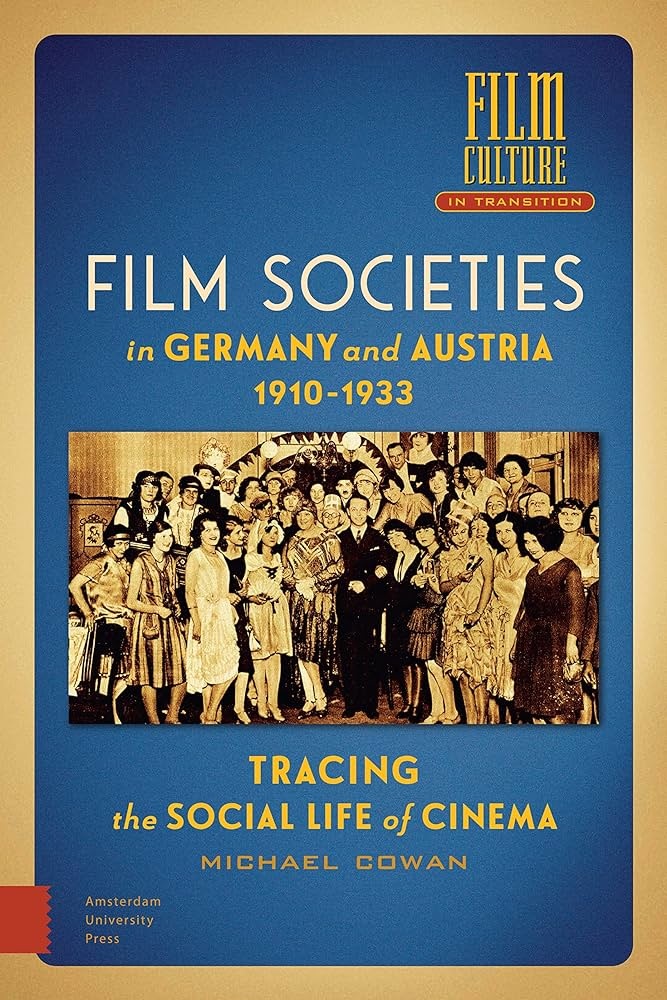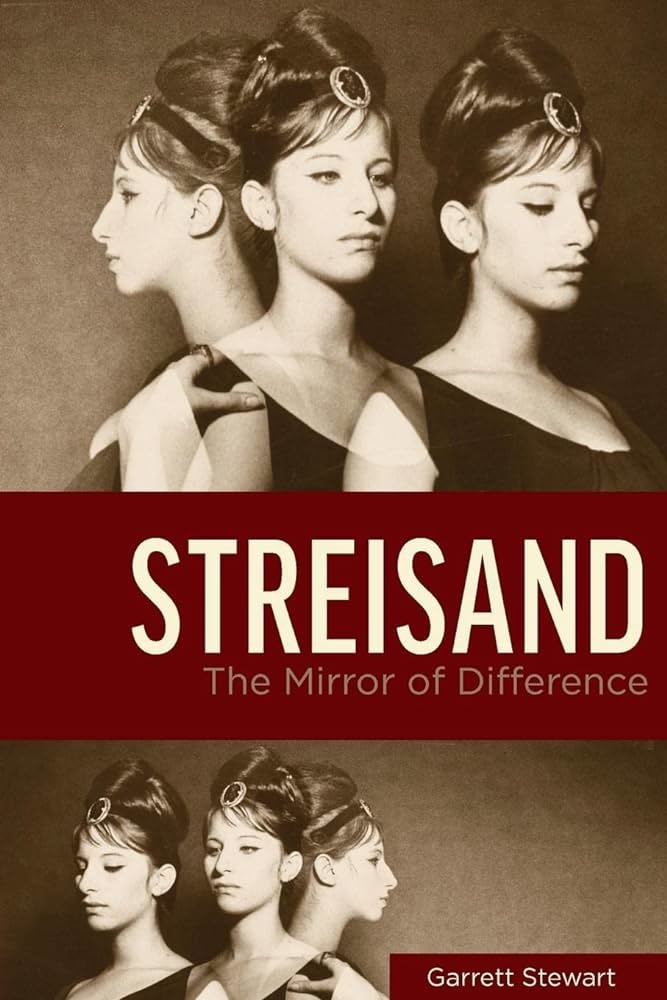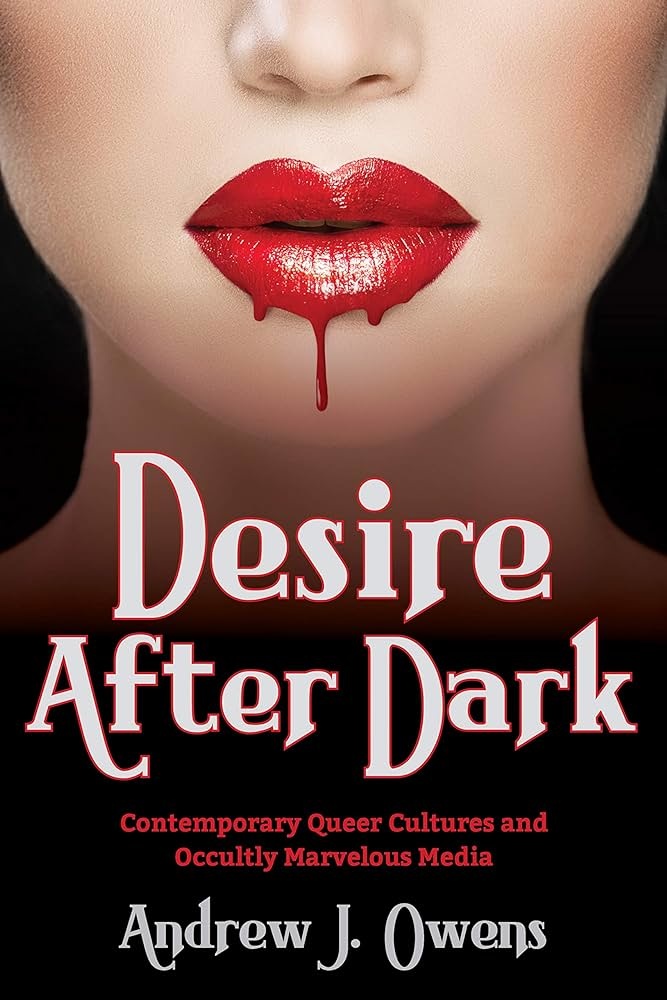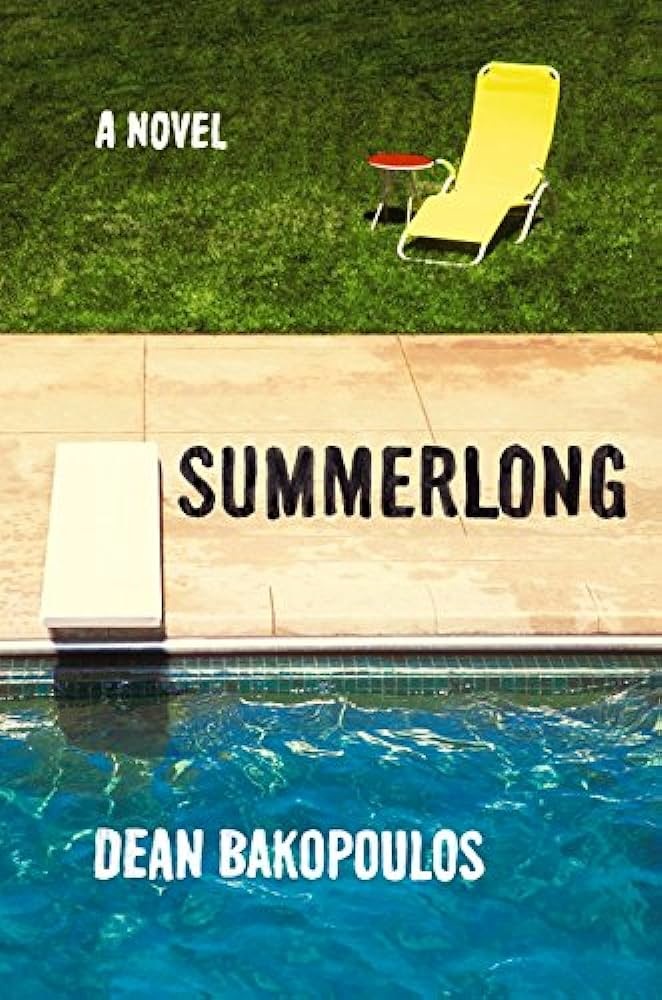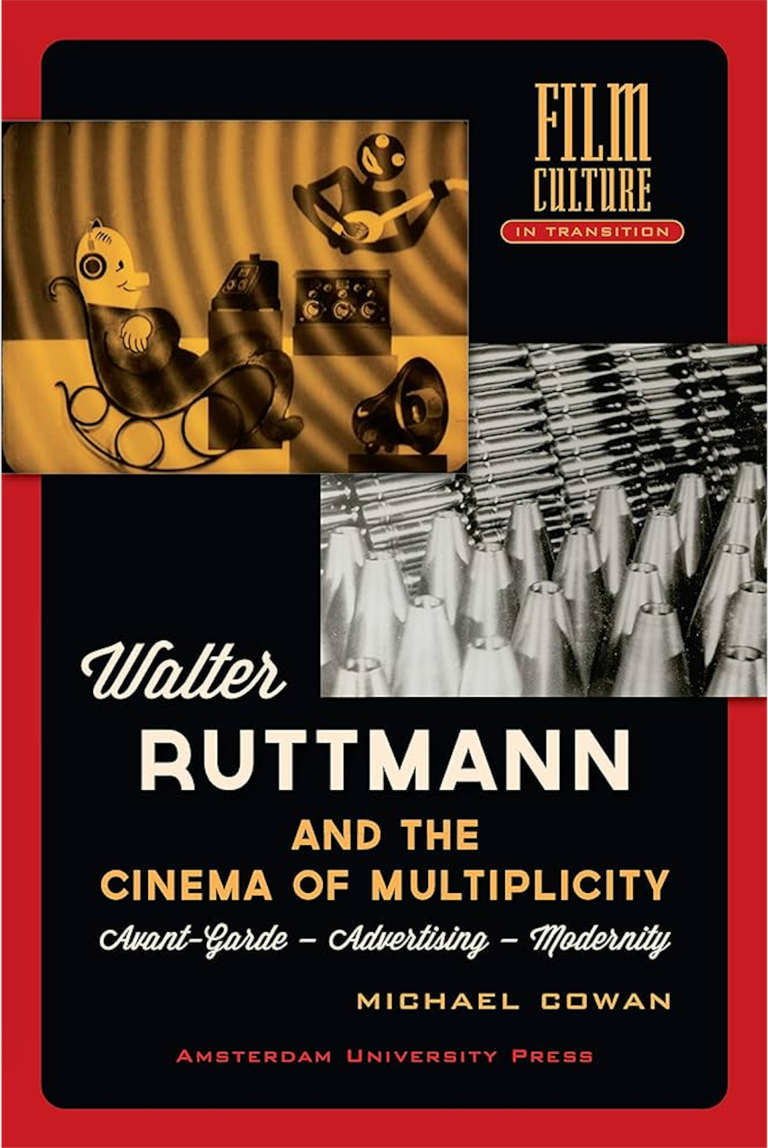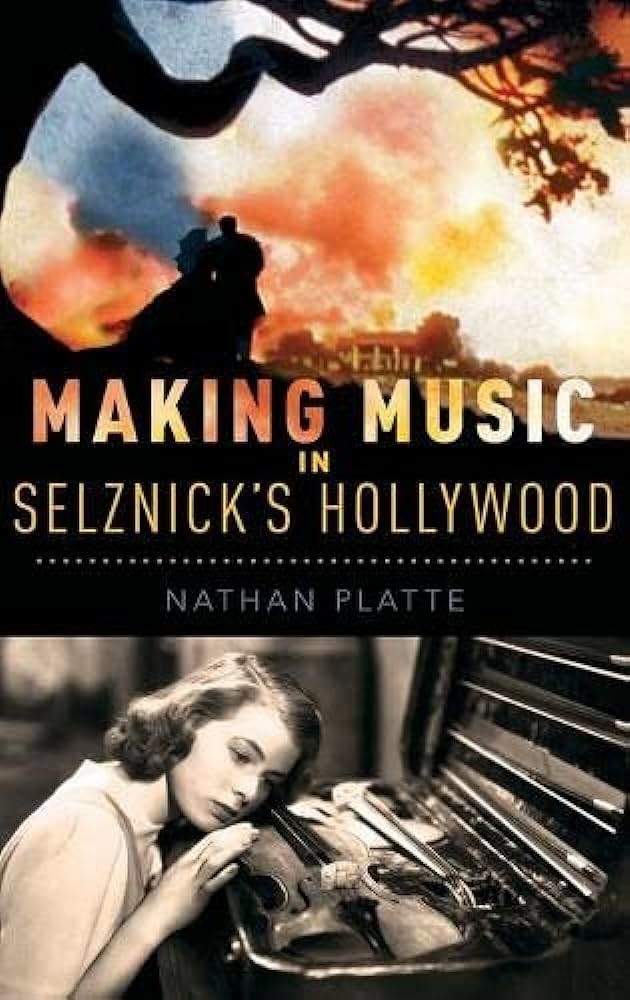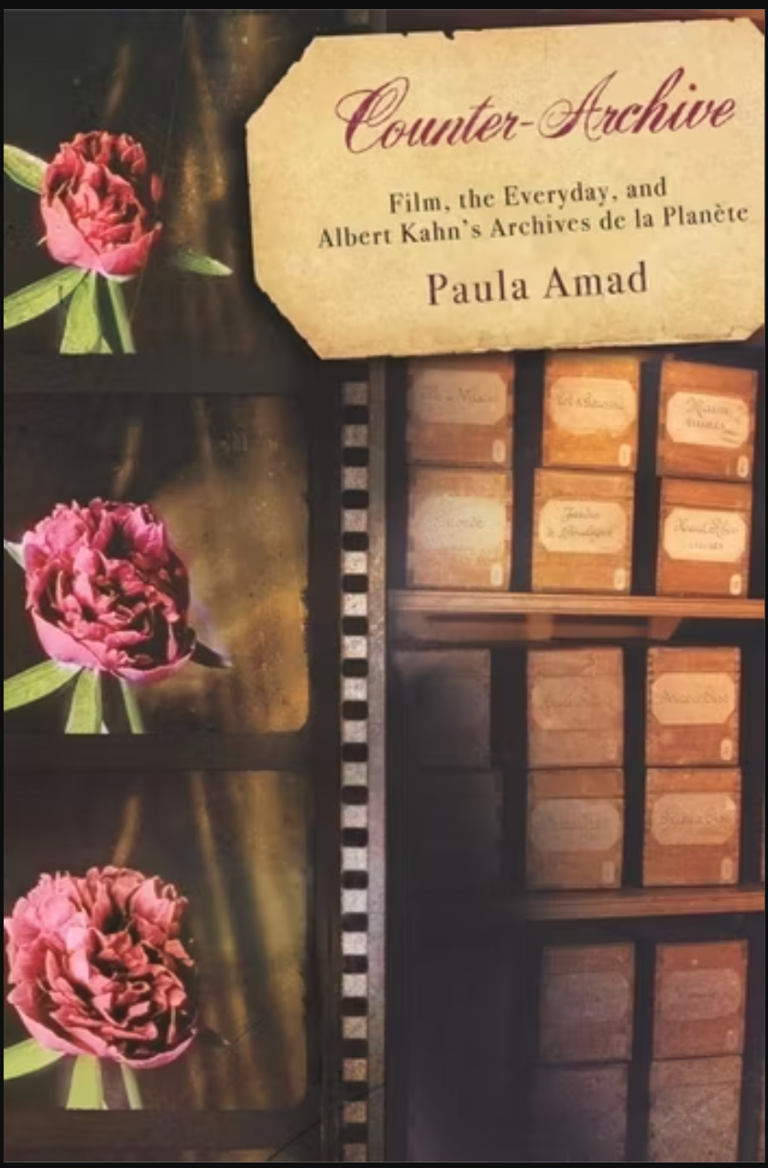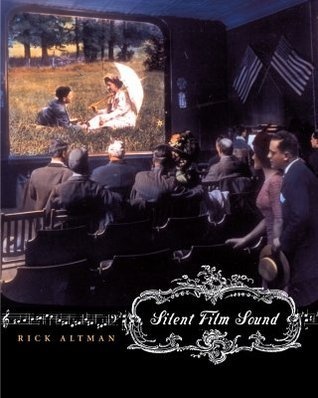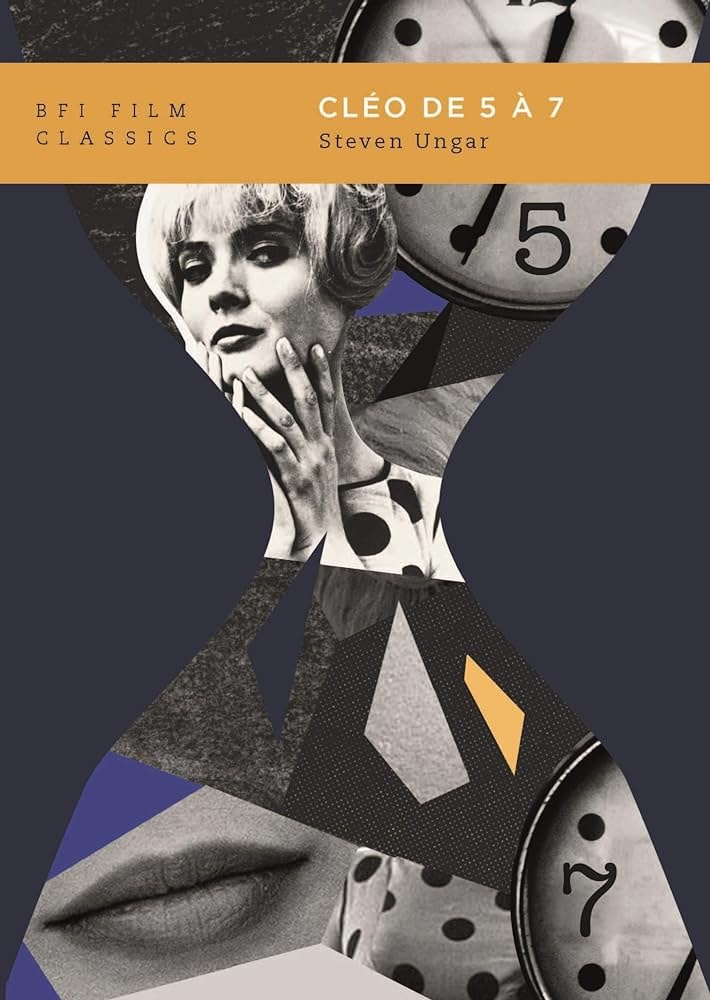Review books by our faculty
The Counterfeit Coin: Video Games and Fantasies of Empowerment (2023)
Chris Goetz
The Counterfeit Coin argues that games and related entertainment media have become almost inseparable from fantasy. In turn, these media are making fantasy itself visible in new ways. Though apparently asocial and egocentric—an internal mental image expressing the fulfillment of some wish—fantasy has become a key term in social contestations of the emerging medium. At issue is whose fantasies are catered to, who feels powerful and gets their way, and who is left out. This book seeks to undo the monolith of commercial gaming by locating multiplicity and difference within fantasy itself. It introduces and tracks three broad fantasy traditions that dynamically connect apparently distinct strata of a game (story and play), that join games to other media, and that encircle players in pleasurable loops as they follow these connections.
Film Societies in Germany and Austria 1910-1933: Tracing the Social Life of Cinema (2023)
Michael Cowan
This study traces the evolution of early film societies in Germany and Austria, from the emergence of mass movie theaters in the 1910s to the turbulent years of the late Weimar Republic. Examining a diverse array of groups, it approaches film societies as formations designed to assimilate and influence a new medium: a project emerging from the world of amateur science before taking new directions into industry, art and politics. Through an interdisciplinary approach—in dialogue with social history, print history and media archaeology—it also transforms our theoretical understanding of what a film society was and how it operated. Far from representing a mere collection of pre-formed cinephiles, film societies were, according to the book’s central argument, productive social formations, which taught people how to nurture their passion for the movies, how to engage with cinema, and how to interact with each other. Ultimately, the study argues that examining film societies can help to reveal the diffuse agency by which generative ideas of cinema take shape.
Streisand: The Mirror of Difference (2022)
Garrett Stewart
At every stage of her career, Barbra Streisand’s genius finds its fullest measure in screen song, first in Emmy-winning TV specials, then in Hollywood blockbusters from Funny Girl to Funny Lady. She goes on, as emerging auteur, to direct her own "musical concepts" in A Star Is Born—before reconceiving the big-screen musical altogether in the writing as well as directing of her own starring role in Yentl ("A Film with Music"). In this intensive reading of the "actress-who-sings," Garrett Stewart notes the gender and ethnic stereotypes that Streisand shattered as the first openly Jewish superstar, while concentrating not just on the cultural difference she made but on the internal differentials of her unholy vocal gift—whose kinetic volatility shapes a kind of cinematic terrain all its own. Down through her filmed return to the concert stage, Stewart elicits the sinuous phonetic text of Streisand’s on-screen musical delivery in a keenly attentive mode of audition that puts into fresh perspective the indelible aura of her stardom.
Desire After Dark: Contemporary Queer Cultures and Occultly Marvelous Media (2021)
Andrew Owens
Since the 1960s, the occult in film and television has responded to and reflected society's crises surrounding gender and sexuality.
In Desire After Dark, Andrew J. Owens explores media where figures such as vampires and witches make use of their supernatural knowledge in order to queer what otherwise appears to be a normative world. Beginning with the global sexual revolutions of the '60s and moving decade by decade through "Euro-sleaze" cinema and theatrical hardcore pornography, the HIV/AIDS crisis, the popularity of New Age religions and witchcraft, and finally the increasingly explicit sexualization of American cable television, Owens contends that occult media has risen to prominence during the past 60 years as a way of exposing and working through cultural crises about queerness. Through the use of historiography and textual analyses of media from Bewitched to The Hunger, Owens reveals that the various players in occult media have always been well aware that non-normative sexuality constitutes the heart of horror's enduring appeal.
By investigating vampirism, witchcraft, and other manifestations of the supernatural in media, Desire After Dark confirms how the queer has been integral to the evolution of the horror genre and its persistent popularity as both a subcultural and mainstream media form.
Cinemachines: An Essay on Media and Method (2020)
Garrett Stewart
The hero stands on stage in high-definition 3-D while doubled on a crude pixel screen in Billy Lynn’s Long Halftime Walk. Alien ships leave Earth by dissolving at the conclusion of Arrival. An illusory death spiral in Vertigo transitions abruptly to a studio set, jolting the spectator. These are a few of the startling visual moments that Garrett Stewart examines in Cinemachines, a compelling, powerful, and witty book about the cultural and mechanical apparatuses that underlie modern cinema.
Engaging in fresh ways with revelatory special effects in the history of cinematic storytelling—from Buster Keaton’s breaching of the film screen in Sherlock Jr. to the pixel disintegration of a remotely projected hologram in Blade Runner 2049—Stewart’s book puts unprecedented emphasis on technique in moving image narrative. Complicating and revising the discourse on historical screen processes, Cinemachines will be crucial reading for anyone interested in the evolution of the movies from a celluloid to a digital medium.
Critical Mass: Social Documentary in France from the Silent Era to the New Wave (2018)
Steven Ungar
The first sustained study to trace the origins of social documentary filmmaking in late 1920s France, Critical Mass provides close readings of individual films and addresses transnational practices as well as state- and industry-wide reforms between 1935 and 1960. It is an indispensable complement to studies of French nonfiction film, from Georges Lacombe’s La Zone to Chris Marker’s Le Joli Mai.
Making Music in Selznick’s Hollywood (2018)
Nathan Platte
Through the rise and fall of the Hollywood studio system, David O. Selznick reigned as Hollywood's preeminent producer. His reputation depended in large part on music. The orchestral cacophony of King Kong, the pulsing electronic sonorities of Spellbound, and the Tara theme from Gone with the Wind made music a distinguishing feature of the Selznick experience. By flaunting music's role in film and overseeing its distribution through sheet music, concerts, radio broadcasts, and soundtrack albums, Selznick cultivated a fascination with film scores. But he did not do it alone.
In Making Music in Selznick's Hollywood, Nathan Platte brings to light the men and women whose work sounds throughout Selznick's many films. The cast includes familiar composers like Max Steiner, Franz Waxman, and Dimitri Tiomkin, but extends to overlooked contributors, including music editor Audray Granville, orchestrator Hugo Friedhofer, harpist Louise Klos, choral director Jester Hairston, publicist Ted Wick, and many others. Novelists, studio writers, and directors like Alfred
Hitchcock also influenced the soundscapes of Selznick's films. Whether working with the producer directly or managing his presence from a distance, all had to reckon with Selznick's musical preoccupations.
Rarely was it easy. Rewritten scores, fired personnel, and other skirmishes reflect the troubles-and uneven compromises-that shaped music for films like Gone with the Wind, Duel in the Sun, and Rebecca. Even Selznick anticipated that such problems would "go down in the history of Hollywood as the last wild fling of people who really fiddled-and how!-while Hollywood burned." Drawing on extensive archival research, Platte recounts those stories here, tracing Selznick's musical labors during the silent era through his work at the major studios and his culminating efforts at Selznick International Pictures. Taken together, Selznick's films provide a sweeping vista of the relationships among musicians and filmmakers that defined the Hollywood sound.
The Promise of Cinema: German Film Theory 1907-1933 (2016)
Ed. Anton Kaes, Nicholas Baer and Michael Cowan
Rich in implications for our present era of media change, The Promise of Cinema offers a compelling new vision of film theory. The volume conceives of “theory” not as a fixed body of canonical texts, but as a dynamic set of reflections on the very idea of cinema and the possibilities once associated with it. Unearthing more than 275 early-twentieth-century German texts, this ground-breaking documentation leads readers into a world that was striving to assimilate modernity’s most powerful new medium. We encounter lesser-known essays by Béla Balázs, Walter Benjamin, and Siegfried Kracauer alongside interventions from the realms of aesthetics, education, industry, politics, science, and technology. The book also features programmatic writings from the Weimar avant-garde and from directors such as Fritz Lang and F.W. Murnau. Nearly all documents appear in English for the first time; each is meticulously introduced and annotated. The most comprehensive collection of German writings on film published to date, The Promise of Cinema is an essential resource for students and scholars of film and media, critical theory, and European culture and history.
Closed Circuits: Screening Narrative Surveillance (2015)
Garrett Stewart
The recent uproar over NSA dataveillance can obscure the fact that surveillance has been part of our lives for decades. And cinema has long been aware of its power—and potential for abuse.
In Closed Circuits, Garrett Stewart analyzes a broad spectrum of films, from M and Rear Window through The Conversation to Déjà Vu, Source Code, and The Bourne Legacy, in which cinema has articulated—and performed—the drama of inspection’s unreturned look. While mainstays of the thriller, both the act and the technology of surveillance, Stewart argues, speak to something more foundational in the very work of cinema. The shared axis of montage and espionage—with editing designed to draw us in and make us forget the omnipresence of the narrative camera—extends to larger questions about the politics of an oversight regime that is increasingly remote and robotic. To such a global technopticon, one telltale response is a proliferating mode of digitally enhanced “surveillancinema.”
Summerlong: A Novel (2015)
Dean Bakopoulos
Award-winning writer Dean Bakopoulos delivers a brutally honest and incredibly funny novel about the strange and tenuous ties that bind us, and the strange and unlikely places we find connection. Full of mirth, melancholy, and redemption, Summerlong explores what happens when life goes awry.
Walter Ruttmann and the Cinema of Multiplicity: Avant-Garde – Advertising – Modernity (2014)
Michael Cowan
A key figure in early avant-garde cinema, Walter Ruttmann was a pioneer of experimental animation and the creative force behind one of the silent era's most celebrated montage films, Berlin: Symphony of a Great City. Yet even as he was making experimental films, Ruttmann had a day job. He worked regularly in advertising -and he would go on to make industrial films, medical films, and even Nazi propaganda films. Michael Cowan offers here the first study of Ruttmann in English, not only shedding light on his commercial, industrial, and propaganda work, but also rethinking his significance in light of recent transformations in film studies. Cowan brilliantly teases out the linkages between the avant-garde and industrial society in the early twentieth century, showing how Ruttmann's films incorporated and enacted strategies for managing the multiplicities of mass society.
Winner of the Willy Haas Award (Germany); Honorable Mention for Best Book by the British Association of Film, Television and Screen Studies (BAFTSS); long-listed for the Kraszna-Krausz Award in the Moving Image.
The International Film Musical (2012)
Edited by Corey Creekmur and Linda Mokdad
This is the first comparative consideration of the musical's role within national cinema traditions. While the musical is one cinema's few genuinely international genres, it has often functioned as an explicitly local or national form, drawing upon distinct traditions understood as 'native' rather than 'international'. Simultaneously, musicals from around the world have often imitated Hollywood models, resulting in their easy dismissal as culturally 'impure' and demonstrating the creative and ideological tension between promoting and abandoning traditional cultural forms and styles. This productive tension between local and global elements lies at the heart of international film musicals, which typically acknowledge the dominant Hollywood model while claiming their own cultural specificity.
The Routledge Film Music Sourcebook (2012)
Ed. James Wierzbicki, Nathan Platte and Colin Roust
The Routledge Film Music Source Book is an annotated, thematically organized collection of approximately eighty source readings pertaining to film music dating from its beginnings to the present, from the US and other select countries around the globe. The documents represent a wide variety of music-related issues that were heatedly debated during cinema’s early decades and which by and large remain of concern today.
Each document is prefaced by a brief introduction that gives details on both the author and the particular issue at hand. Also, each group of documents is prefaced by a longer introduction that puts into historical context the collective information and opinions that follow. The organizational scheme is at the same time chronological and thematic in a pattern that alternates between aesthetic and practical considerations.
Technology’s Pulse: Rhythm in German Modernism (2011/2018)
Michael Cowan
Modernity, as has often been observed, was fundamentally concerned with questions of temporality. The period around 1900, in particular, witnessed numerous efforts both to rationalize time and to liberate non-rational temporal experience. Within this broader framework, 'rhythm' came to form the object of an intense and widespread preoccupation. Rhythmical research played a central role not only in the reconceptualisation of human physiology and labour in the late nineteenth century, but also in the emergence of a new leisure culture in the early twentieth. The book traces the ways in which ideas about 'rhythm' were mobilised both to conceptualise modernity and to forge a new understanding of temporal media that came to mark the mass-mediated experience of the 1920s: a conception of artistic media as mediators between the organic and the rational, the time of the body and that of the machine.
My American Unhappiness (2011)
Dean Bakopoulos
“Why are you so unhappy?” That’s the question that Zeke Pappas, a thirty-three-year-old scholar, asks almost everybody he meets as part of an obsessive project, “The Inventory of American Unhappiness.” The answers he receives—a mix of true sadness and absurd complaint—create a collage of woe. Zeke, meanwhile, remains delightfully oblivious to the increasingly harsh realities that threaten his daily routine, opting instead to focus his energy on finding the perfect mate so that he can gain custody of his orphaned nieces. Following steps outlined in a women’s magazine, the ever-optimistic Zeke identifies some “prospects”: a newly divorced neighbor, a coffeehouse barista, his administrative assistant, and Sofia Coppola (“Why not aim high?”).
A clairvoyant when it comes to the Starbucks orders of strangers, a quixotic renegade when it comes to the federal bureaucracy, and a devoted believer in the afternoon cocktail and the evening binge, Zeke has an irreverent voice that is a marvel of lacerating wit and heart-on-sleeve emotion, underscored by a creeping paranoia and made more urgent by the hope that if he can only find a wife, he might have a second chance at life.
Franz Waxman’s Rebecca: A Film Score Guide (2011)
David Neumeyer and Nathan Platte
Upon his arrival in Hollywood, Alfred Hitchcock began work on his first American film, an adaptation of Daphne du Maurier’s best-selling novel. Produced by David O. Selznick and featuring compelling performances by Laurence Olivier, Joan Fontaine, and Judith Anderson, Rebecca became one of Hitchcock’s most successful films. It was nominated for eleven Academy Awards and received the Oscar for Best Picture, the only Hitchcock work to be so honored. Without question, one of the reasons for the film’s success is its ninety minutes of dramatic musical underscoring by Franz Waxman.
In Franz Waxman’s Rebecca: A Film Score Guide, David Neumeyer and Nathan Platte situate the score for this classic work within the context of the composer’s life and career. Beginning with Waxman’s early training and professional experience as a jazz musician and film-music arranger-orchestrator in Berlin, the authors also recount the composer’s work in the music department at MGM between 1936 and 1942. During this period, Waxman was loaned out to Selznick International Pictures and wrote the music for Rebecca. Through manuscript and archival research, Neumeyer and Platte untangle the threads of the film’s complicated music production process, which was strongly influenced by Selznick’s habit of micromanaging music choices and placement. This volume concludes with a thematic analysis and reading of the score that incorporates commentary on scenes and cues.
Counter-Archive: Film, the Everyday, and Albert Kahn's Archives de la Planète (2010)
Paula Amad
Tucked away in a garden on the edge of Paris is a multimedia archive like no other: Albert Kahn's Archives de la Planète (1908-1931). Kahn's vast photo-cinematographic experiment preserved world memory through the privileged lens of everyday life, and Counter-Archive situates this project in its biographic, intellectual, and cinematic contexts. Tracing the archive's key influences, such as the philosopher Henri Bergson, the geographer Jean Brunhes, and the biologist Jean Comandon, Paula Amad maps an alternative landscape of French cultural modernity in which vitalist philosophy cross-pollinated with early film theory, documentary film with the avant-garde, cinematic models of temporality with the early Annales school of history, and film's appropriation of the planet with human geography and colonial ideology. At the heart of the book is an insightful meditation upon the transformed concept of the archive in the age of cinema and an innovative argument about film's counter-archival challenge to history. The first comprehensive study of Kahn's films, Counter-Archive also offers a vital historical perspective on debates involving archives, media, and memory. (from amazon.com)
World Cinemas, Transnational Perspectives (2009)
Edited by Nataša Durovicová and Kathleen Newman
The standard analytical category of "national cinema" has increasingly been called into question by the category of the "transnational." This anthology examines the premises and consequences of the coexistence of these two categories and the parameters of historiographical approaches that cross the borders of nation-states.
Cléo de 5 à 7 (2008 - English, 2013 - French)
Steven Ungar
Ungar provides a close reading of the film Cléo de 5 à 7, Agnes Varda’s classic work of 1962, and situates it in its social, political and cinematic context, tracing Varda’s early career as a student of art history and a photographer, the history of post-war French film, and the lengthy Algerian war to which Cléo’s health concerns and ambitions to become a pop singer make her more or less oblivious. His study is the first to set a reading of Cléo’s formal and technical complexity alongside an analysis of its status as a document of a specific historical moment.
A Theory of Narrative (2008)
Rick Altman
A Theory of Narrative is a close study of narrative's nature, its variation in different contexts, and the method through which it makes meaning. Altman's approach breaks away from traditional forms of analysis, identifying three basic strategies: single-focus, dual-focus, and multiple-focus. Unpacking an intentionally diverse selection of texts, Altman demonstrates how these strategies function in context and illustrates their theoretical and practical applications in terms of textual analysis, literary and film history, social organization, religion, and politics.
Cinema, Law, and the State in Asia (2007)
Edited by Corey K. Creekmur and Mark Sidel
This book crosses the conventional border between the analysis of on-screen and off-screen intersections of law and cinema. It not only addresses the representation of law on screen (for example, through discussions of how lawyers, police, and prisons are depicted, or how courtroom sequences function as narratives), but also focuses on how the state shapes and regulates cinema. The volume addresses the distinct contexts of China, India, Japan, Korea, the Philippines, and Vietnam, along with an integrative introduction that puts the essays and themes into context.
Dada: Themes and Movements (2006)
Edited by Rudolf Kuenzli
Eminent scholar Rudolf Kuenzli presents a rich selection of the Dadas' experimental visual and literary works to give a lively, accessible and comprehensive assessment. This book incorporates all aspects of Dada activity—visual arts, documented performance and writing in works by artists such as Max Ernst, Francis Picabia and Marcell Duchamp; it covers not only Western Europe and America but also Central and Eastern Europe and Japan, plus Neo-Dada worldwide.
Please Don’t Come Back from the Moon (2006)
Dean Bakopoulos
The summer Michael Smolij turns sixteen, his father disappears. One by one other men also vanish from the blue-collar neighborhood outside Detroit where their fathers before them had lived, raised families, and, in a more promising era, worked. One man props open the door to his shoe store and leaves a note. "I'm going to the moon," it reads. "I took the cash."
The wives drink, brawl, and sleep around, gradually settling down to make new lives and shaking off the belief in an American dream that, like their husbands, has proven to be a thing of the past. Unable to leave the neighborhood their fathers abandoned, Michael and his friends stumble through their twenties until the restlessness of the fathers blooms in them, threatening to carry them away.
This is a haunting, unforgettable novel for anyone who has ever been left longing.
Popular Front Paris and the Poetics of Culture (2005)
Dudley Andrew and Steven Ungar
In this book, Andrew and Ungar apply an evocative "poetics of culture" to capture the complex atmospherics of Paris in the 1930s. They highlight the new symbolic forces put in play by technologies of the illustrated press and the sound film—technologies that converged with efforts among writers (Gide, Malraux, Céline), artists (Renoir, Dalí), and other intellectuals (Mounier, de Rougemont, Leiris) to respond to the decade's crises.
Silent Film Sound (2004)
Rick Altman
Silent Film Sound reconsiders all aspects of sound practices during the entire silent film period. Based on extensive original research and accompanied by gorgeous illustrations, the book challenges the assumptions of earlier histories of this period in film and reveals the complexity and swiftly changing nature of American silent cinema.

